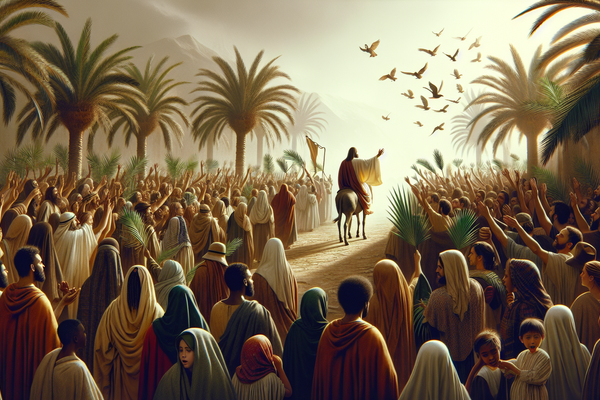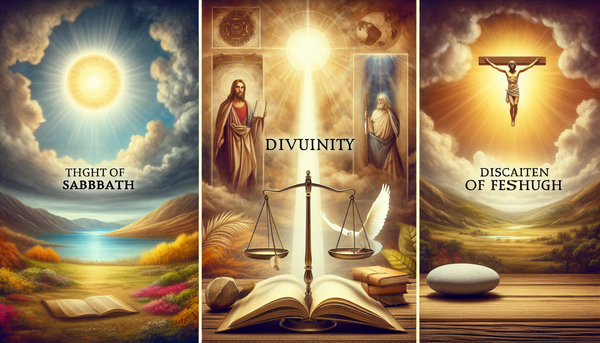As the Lenten season draws to a close, Christians around the globe prepare to commemorate Palm Sunday, a day that holds significant weight in the tapestry of faith. It marks the beginning of Holy Week, a period leading up to the crucifixion and resurrection of Jesus Christ. Palm Sunday is rooted in the Gospel accounts of Jesus' triumphant yet humble entry into Jerusalem, an event steeped in cultural tradition and prophetic fulfillment. The cloaks laid on the ground, the palm branches waved by the jubilant crowd, and Jesus' choice of a donkey for His procession all convey a message of reverence, celebration, and divine revelation that resonates through the ages.
Table of Contents
The Meaning of Palm Sunday
Palm Sunday is imbued with a deep sense of anticipation and reflection. As Jesus entered Jerusalem to the cries of 'Hosanna!' the people demonstrated their recognition of Him as the promised Messiah. Matthew records this scene: 'The crowds that went ahead of him and those that followed shouted, \"Hosanna to the Son of David!\"' (Matthew 21:9). The day is thus a poignant reminder of Jesus' purposeful journey towards the cross, embodying both sacrifice and victory. Christians are called to consider the juxtaposition of Jesus' triumphant entry with His impending crucifixion, meditating on the profound humility and love demonstrated by Christ's willingness to fulfill His redemptive mission.
The Significance of Palm Branches
The presence of palm branches during Jesus' entry into Jerusalem was a powerful symbol of victory and triumph. The Gospel of John tells us that 'they took branches of palm trees and went out to meet him, crying out, \"Hosanna! Blessed is he who comes in the name of the Lord, even the King of Israel!\"' (John 12:13). In the Jewish tradition, palm branches were associated with the Feast of Tabernacles, a time of joy and thanksgiving (Leviticus 23:40). Waving these branches, the people of Jerusalem were not only honoring Jesus but also prophetically declaring Him as their victor and deliverer, an act that underscored their anticipation of salvation and freedom. As we reflect on the signs and stirrings of the Second Coming, the imagery of palm branches continues to serve as a beacon of hope and triumph for believers.
The Symbolism of Jesus Riding on a Donkey
The choice of Jesus to enter Jerusalem on a donkey was laden with messianic symbolism, fulfilling the words of the prophet Zechariah: 'Rejoice greatly, O daughter of Zion! Shout, daughter of Jerusalem! See, your king comes to you, righteous and victorious, lowly and riding on a donkey, on a colt, the foal of a donkey' (Zechariah 9:9). By riding a donkey, a humble beast of burden, Jesus contrasted the expectations of a conquering hero with the reality of His peaceful kingship. This choice underscored His mission of peace and reconciliation, and it offered a stark alternative to the prevailing notions of power and dominion. Jesus' entry into Jerusalem on a donkey was both a declaration of His identity as the Messiah and a prophetic sign of the nature of His kingdom.
The Cry of \"Hosanna\
The cries of 'Hosanna' that accompanied Jesus' entrance to Jerusalem were not only shouts of praise but also pleas for salvation. 'Hosanna' is a Hebrew expression meaning 'Save, please,' and its use in this context reflects the people's desire for deliverance, as echoed in Psalm 118: 'Lord, save us! Lord, grant us success!' (Psalm 118:25). The people recognized Jesus as the fulfillment of the messianic hope, the one who comes 'in the name of the Lord' (Psalm 118:26). Yet, this moment of adoration would soon give way to betrayal and suffering during Holy Week, adding a layer of complexity to the narrative and foreshadowing the events that would lead to Jesus' crucifixion.
Conclusion
The observance of Palm Sunday invites Christians to pause and ponder the rich tapestry of symbolism and prophecy that surrounded Jesus' entry into Jerusalem. As the cloaks were laid down and palm branches waved, the people of that time expressed their hopes and recognized Jesus as their king and savior. Today, believers continue to honor this tradition, reflecting on the humility and ultimate sacrifice of Christ. Palm Sunday serves as a gateway into Holy Week, setting the stage for the solemn events of Jesus' passion and the joyous celebration of His resurrection on Easter Sunday. It is a time to prepare hearts and minds for the remembrance of the greatest act of love in history.
FAQ
Q: Why did the crowds lay cloaks down for Jesus when he arrived in Jerusalem?
A: The crowds laid cloaks down for Jesus as a sign of honor and respect, recognizing Him as a significant and respected figure, and acknowledging Him as their long-awaited Messiah and King.
Q: What does Palm Sunday mean?
A: Palm Sunday commemorates Jesus Christ's triumphal entry into Jerusalem, marking the beginning of Holy Week and leading up to Easter Sunday. It reflects on Jesus' humility, sacrifice, and victory.
Q: Why did crowds have palm branches when Jesus arrived in Jerusalem?
A: The crowds had palm branches to honor and welcome Jesus as the Messiah, fulfilling the prophecy of victory and triumph associated with the long-awaited Savior.
Q: What is the significance of Jesus riding into Jerusalem on a donkey?
A: Jesus riding into Jerusalem on a donkey fulfilled the prophecy from Zechariah, symbolizing His peaceful kingship and mission of peace and reconciliation.



